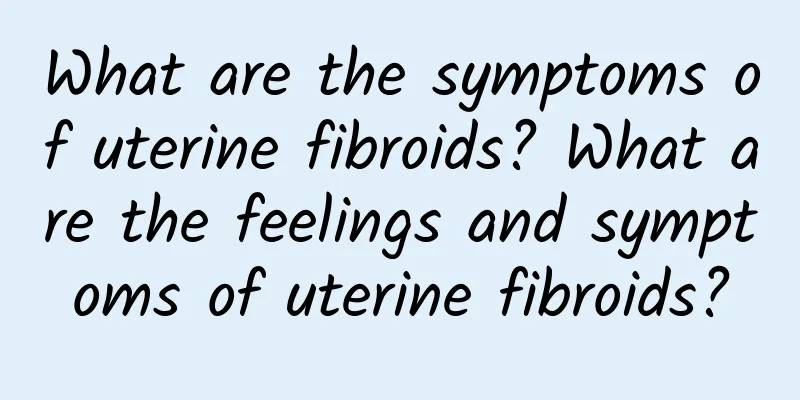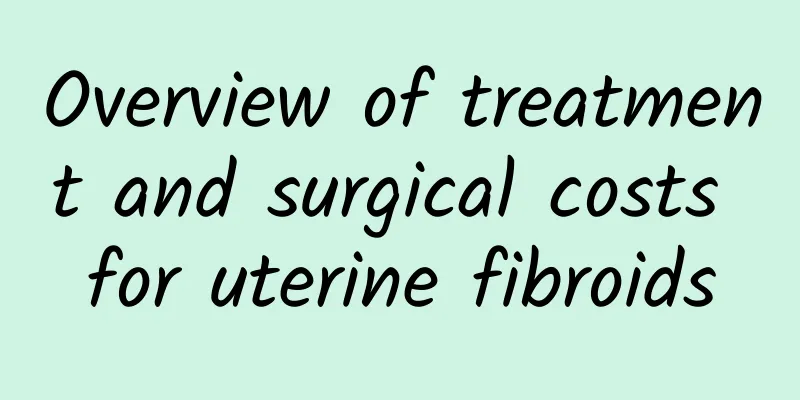What are the symptoms of ovarian cysts and how to detect them

|
What are the symptoms of ovarian cysts and how can they be detected? 1. Patients can discover ovarian tumors in time by themselves. When they wake up in the morning, they can empty their stomachs and empty their bowels and bladders. They can lie on their backs in bed, bend their hips and knees, relax their abdomen, and use their fingertips to press various parts of the abdomen, especially the sides, and carefully feel for lumps. In this way, it is possible to self-discover ovarian tumors at an early stage. It is easy for thin women with soft skin to touch and self-examine. 2. To put it simply and intuitively, "ovarian cyst" refers to a mass inside or on the surface of the ovary. The symptoms of ovarian cysts are usually liquid, sometimes solid, or a mixture of liquid and solid. Ovarian cysts are usually relatively small, the size of a pea or cashew, and some cysts look like softballs or even larger. 3. The pain caused by ovarian cysts is sometimes persistent and sometimes hidden. Malignant cysts mainly cause abdominal pain, leg pain, and pain, often requiring patients to seek emergency treatment. Usually, huge ovarian tumors can cause dyspnea and palpitations due to compression of the diaphragm. Ovarian tumors can also cause ovarian cysts to block the birth canal, but the dyspnea of some ovarian tumor patients is caused by pleural effusion on one or both sides. 4. If the tumor has no complications, pain is rare. Patients with ovarian tumors experience abdominal pain, especially when it occurs suddenly. It is mostly caused by tumor pedicle torsion, and occasionally by tumor rupture, bleeding or infection. Malignant cysts mainly cause abdominal pain and leg pain, and the pain often causes patients to go to the emergency room. 5. Generally, ovarian cysts, even bilateral ovarian cysts, do not cause menstrual disorders because they do not destroy all normal ovarian tissue. Some uterine bleeding is not endocrine, or it is caused by ovarian tumors changing the pelvic vascular distribution, causing endometrial congestion; or it is caused by malignant ovarian tumors directly metastasizing to the endometrium. Menstrual disorders caused by endocrine tumors are usually combined with other secretory effects. |
<<: Does wearing an IUD have any effect on adenomyosis?
>>: What causes ovarian cysts?
Recommend
Cervical erosion has nothing to do with cancer
Is cervical erosion related to cancer? What are t...
Women should choose the right method for abortion. How to nourish after the operation? What to eat after abortion to recover quickly
Abortion is a way to terminate pregnancy. There a...
What should I pay attention to after abortion surgery?
Abortion surgery is something that everyone is fa...
To improve childhood obesity, we must first reduce junk food intake
The World Health Organization has repeatedly warn...
How can women avoid pelvic peritonitis?
I believe that many people are already familiar w...
The dangers of premature ovarian failure
The dangers of premature ovarian failure: If a wo...
Is eating low-calorie red beans a magic weapon for losing weight? Don't mix red beans with coffee or tea to prevent iron absorption
Some people try various weight loss methods, but ...
Can I have a painless abortion after drinking for half a month?
Can I have a painless abortion after drinking for...
How much does minimally invasive surgery for pelvic inflammatory disease cost?
How much does minimally invasive surgery for pelv...
Eight key points to easily prevent and treat uterine fibroids!
How to prevent and treat uterine fibroids? Uterin...
Analysis of nursing care for patients with bacterial vaginosis
Bacterial vaginosis is a STD that is different fr...
How to treat premature ovarian failure
How to treat premature ovarian failure? Premature...
What causes severe cervical erosion and how to treat it?
What causes severe cervical erosion and how to tr...
What causes cervical contact bleeding?
There are many reasons for cervical contact bleed...
Normal causes of endometrial thickening
The thickness of the endometrium changes regularl...









